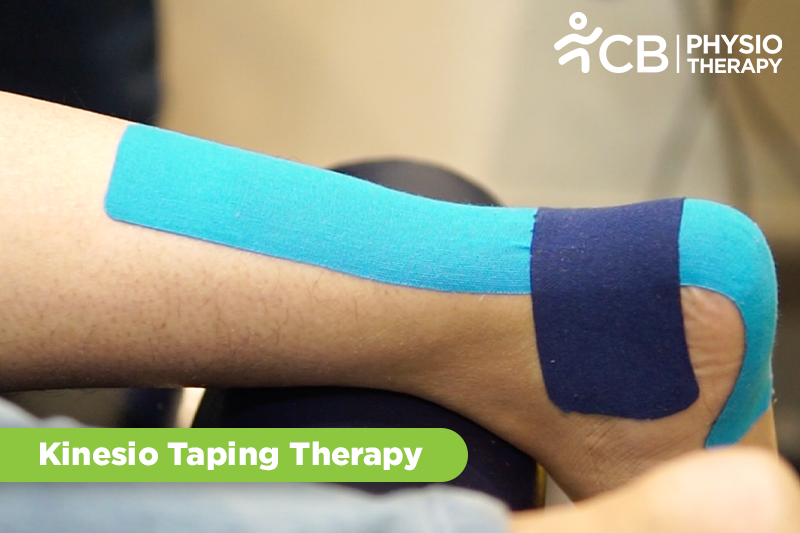
Elastic Therapeutic Tape, also called Kinesiology Tape, Kinesio Tape, K-Tape is a rehabilitative method used to facilitate the body's natural healing process, while providing support and stability to muscles and joints without restricting the body's range of motion. Tapping is usually used by physiotherapists to change Muscle Tone, Move Lymphatic Fluids, Correct Movement Patterns, and Improve Posture.
Kinesiology tape is a therapeutic tape that is applied to the body to decrease pain, reduce swelling, and improve functionality. The process involves placing Strips of Kinesiology tape on the body in Specific directions for therapeutic purposes.
K-Taping can be applied in the shape of a "Y", "I", "X", "Fan", "Web" or "Donut". Depending upon the size of the affected muscle and the result to be achieved, the shape of taping is decided.
"Y" Tape:
"Y" Tape application is generally used to
1. Surround the target Muscle
2. Inhibit or Facilitate muscle stimuli
3. Should be 2 inches longer than the target muscle.
"I" Tape:
"I" Tape application is generally used for
1. Acute injuries in place of "Y" Tape
2. Edema and pain (Primary purpose)
3. Alignment correction.
"X" Tape:
"X" Tape application is generally used when
· The origin and the intersection of the target muscle change depending on movement e.g. the Rhomboids.
"Fan" /"web" Tape:
"Fan" /"web" tape application is used for
· Edema (Web is different because the ends remain intact).
"Donut" Tape:
"Donut" tape application is used for:
· Edema (Use overlapping strips and the center is cut out over the area of focus).
Kinesiology tape is stretchable, water-resistant adhesive, made of nylon and cotton both. It is elastic-like skin, therefore allows a full range of motion. When the tape is applied to the body, it lifts your skin gently by recoiling, creating space between the skin and the underneath tissues. These tissues contain sensory receptors that feel, touch, pain, and temperature, also responsible for sensing proprioception. Kinesiology taping decompresses these tissues thus sending new signals to the brain. When the brain receives these signals, it responds differently.
· Clean and dry the area where taping is to be done.
· Trim the excess hair, as it can prevent the tape from gripping the skin.
· Apply the first strip, after the backing paper is taken off let the end recoil slightly, which prevents any stretch in the last two inches at either end because the tabs help to hold the tape in place. If the ends are stretched, the tape will pull the skin and the tape will get detached.
· To hold the tape keep your fingers on the packing paper. To prevent it from sticking.
· To apply the tape in the treatment area. Stretch the tape by 75 percent and extend the tape as far as it will go and then release it about a quarter of its length.
· To get an even stretch, use the whole length of your thumb across the tape.
· After the tape is applied, rub the strip vigorously for few seconds. Heat is created by rubbing, which activates the glue, it takes few minutes for tape to stick to the skin.
Follow these steps to remove the tape from the body:
. Apply some lotion or oil on top of the tape to loosen the strip.
· Remove it slowly.
· Pull up one end of the strip, and press the skin down to separate it from the tape.
· Pull the tape back gently.
In few cases, the tape might cause skin allergies. Therefore to prevent so apply a test strip first, to check if the person is allergic to the tape.
Kinesiology taping should be avoided in certain conditions as it might cause harm to the patient.
· Tumors
· Infection, cellulitis
· Open Wound
· DVT
· Allergic
· Skin problems
· Diabetes
· Congestive Heart Failure
· Fracture.
Select your City to find & connect with our experts regarding Physiotherapy for Kinesio Taping / Taping Therapy